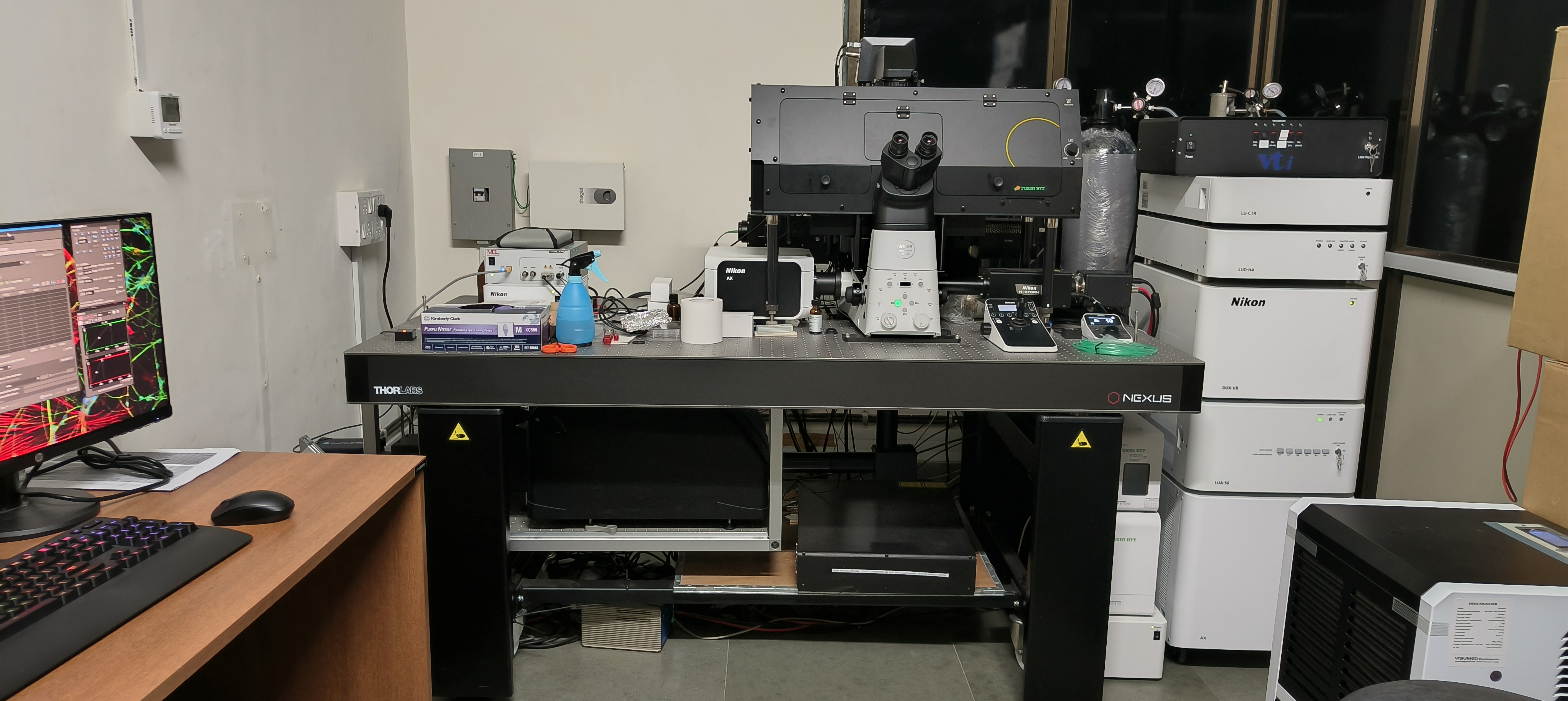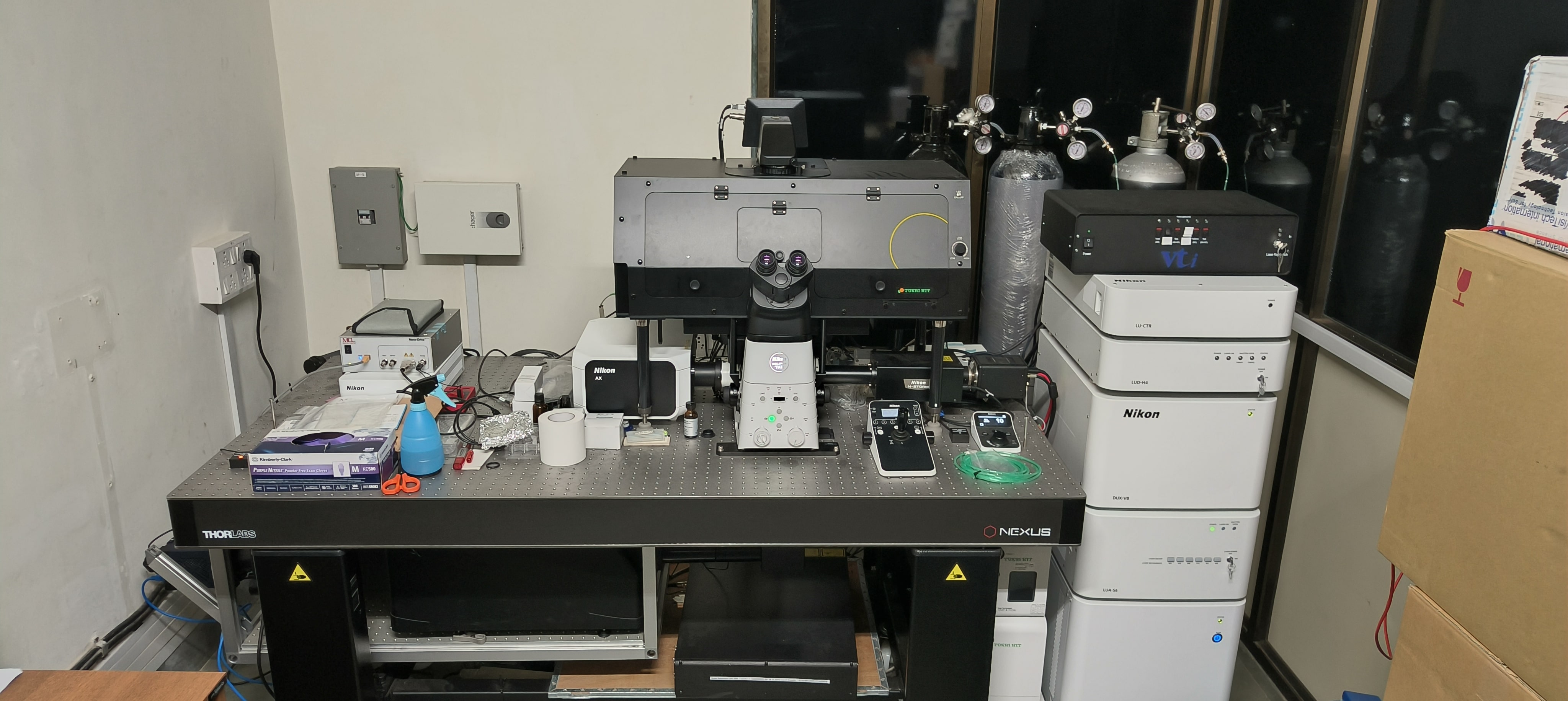Super-Resolution Confocal Microscope
Super-resolution microscopy is a relatively new method compared to confocal microscopy, and ongoing developments aim to improve its standards. While confocal microscopy has been praised for its high contrast, recent methods show that super-resolution microscopy, specifically via the instant-structured illumination microscopy (i-SIM) technique, is capable of capturing reflectance imaging with more than double the resolution of confocal microscopy. This increased resolving capability has been applied to imaging nanoparticle uptake and localization inside cells. These developments contribute to super-resolution microscopy becoming a validated alternative to confocal microscopy for imaging subcellular activity. Whilst maintaining the necessary temporal resolution and at a low photobleaching level, our VT-iSIM offers a spatial resolution of 100 nm and axial resolution of 300 nm.
Super-resolution microscopy allows us to see the smallest structures in living cells that are not visible with standard widefield or confocal fluorescence microscopy. We have another superresolution microscopy called Stochastic Optical Reconstruction Microscopy (N-STORM). This technique provides a 3D resolution that is much higher than the diffraction limit, giving us new insights into the organization of cells and the dynamics of biomolecular assemblies at a nearmolecular level. Super-resolution microscopy overcomes the diffraction barrier, enabling "nanoscopy" with greatly improved optical resolution down to 20 nm. This method relies on the physical or chemical properties of nearby fluorophores to distinguish them from each other.
Besides the above super-resolution microscopy, our system also capable to do conventional confocal microscopy. All these are installed in a Nikon state-of-the-art inverted microscope.
- Nikon, Super Resolution N-STORM
- Super Resolution (SR) VT-iSIM
- Nikon, Confocal AX/AXR
- N-STORM Imaging: Localization-based super-resolution N-STORM imaging: 2D and 3D imaging, multichannel
- VT i-SIM Imaging: High-speed two-color simultaneous along with DIC/ brightfield. Time-lapse, multipoint, Z-stacks, multichannel, image stitching/large image.
- Confocal imaging: up to four-color simultaneous imaging along with DIC imaging/ brightfield imaging. Time-lapse, multipoint, Z-stacks, multichannel, image stitching/large image (single or in combination).
- Modes of VT i-SIM scanning: Imaging High-Speed: 65 fps @ 1024x1024 pixel, and 130 fps @ 512x512 pixel. Dual CMOS Camera Configuration: Photometric Prime BSI Express Camera. Spatial Resolution: 120 nm Laterally (XY) and 300 nm Axially (Z).
- Modes of N-STORM: Super-resolution imaging with special sample preparation to achieve resolution up to 20 nm (XY) and 50 nm (Z).
- Modes of confocal scanning: High-speed XY galvo scanner with minimum 180⁰ scan rotation with total scan flexibilities of line, freehand curved line, XY, XYZ, XYZ t AND XYZ t λ combinations. Travel range of 250 nm.
- High-speed imaging.
- Frame/line/lambda capturing
- Z- stacks and 3D image reconstruction
- 2D and 3D image deconvolution
- Time series (with or without Z-stack)
- Tile scanning to image different parts of the sample automatically over long durations)
- FRET, FRAP
- Multi-point time-lapse imaging
- Co-localization analysis, 3D volume rendering and 3D measurementv
- Real-time ratio-display
- Prof. Santanu Kumar Ghosh
Imaging Facility, Ground floor Biosciences & Bioengineering Department.
I.I.T. Bombay, Powai, Mumbai - 400 076.
Contact No: 022-21596719/6746
- Mr. Pradip Shinde
Prof. Santanu K Ghosh (Convener, BSBE)
Prof. Anirban Banerjee (BSBE)
Prof. Roop Mallik (BSBE)
Prof. Anindya Dutta (Chem)
Prof. Shobhna Kapoor (Chem)
Prof. Abhijit Majumder (Chem Engg)



